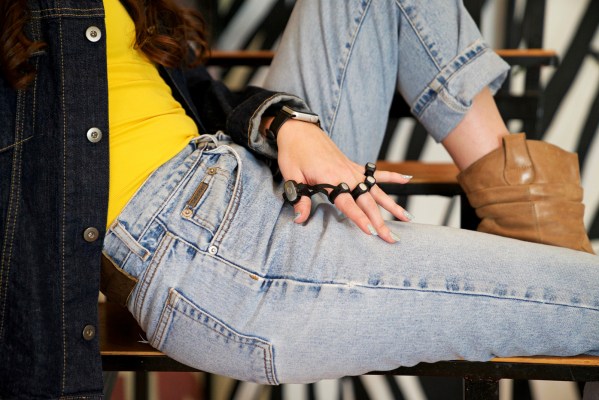Tap Systems, the developer of the Tap wearable keyboard and mouse, is releasing a developer SDK for interested programmers.
The software kit will let developers design applications that can integrate with the Tap wearable, which answers the once unanswerable question: what’s the result of one-hand tapping?
Resting on the fingers of one hand, the Tap wearable provides a new way for users to interact with hardware. Finger taps are the input that the device uses to determine movement and keystrokes. Using Tap, the company says anyone can send messages, play games, point, click and scroll on almost any surface.
“Since Tap’s inception we’ve been contacted by everyone from mobile game and language input developers, to folks developing for accessibility use and even enterprise,” said Dovid Schick, the chief executive and founder of Tap Systems, in a statement.
The company sees applications for its technology in anything from mobile gaming to virtual and augmented reality and language input developers who have struggled to translate character-based languages to existing user interfaces.
Tap System’s released toolset includes SDKs for both iOS and Android, a plug-in for Unity, as well as example applications and documentation. The company also released an API to enable any BLE-enabled platform to interface directly with the Tap wearable.
The wearable costs $179, but the software development kit is royalty-free, open source and available under the company’s terms of use.
[gallery ids="1620672,1620670,1620676,1620675,1620674"]
It’s a big step for the Pasadena, Calif.-based company that first brought its product to market late last year. Founded by longtime technology developers Dovid Schick and Sabrina Kemeny, the company’s hardware is a response to a problem that Schick says bedeviled him for years.
“What would be the problem of the future of inputs?,” Schick asked me. “As things get virtualized and more wearable…. I went through a lot of different scenarios and came up with the idea of tapping your fingers. Tapping your fingers is an incredibly natural and fast and intuitive movement.”
There’s a bit of training required as users get acclimated to a new way of typing, but the tapping mechanism is more efficient, Schick argues, and is certainly a boon for accessibility.
“A,e,i,o,u maps to a single finger tapping,” says Schick. “The hardest taps are done … mapped to the least frequent letters in the alphabet.”
While Schick admits that his company might not be the company that completes the ongoing quest for a new user interface, he is firmly convinced that tapping is the next big thing in hardware interfaces. “Taps will be a modality… whether my company will be the one that will survive and make it great… Once you’ve tried it and seen it in action it just makes too much sense that this will not be something that is huge.”
The company began taking pre-orders earlier in the year and started shipping product about two months ago — and is now planning to go out to raise its first round of outside capital.
